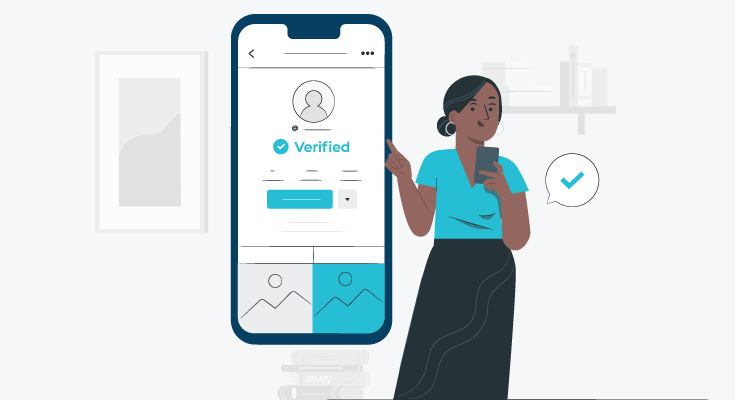Digital Document Verification: Enhancing Security and Efficiency
In the online onboarding process, digital document verification becomes the need of an hour. It eliminates the need for in-person document verification. Traditional paper-based techniques of document verification have given way to digital document verification, a procedure that combines modern technologies with security measures to confirm the reliability of various forms of digital proof. The need for accurate and efficient document verification cannot be undervalued, whether for financial transactions, enrolling new customers, or validating identities.
Understanding Document Authentication
Digital document verification involves the verification of documents like passports, national identity cards or licenses. Document verification is the method to verify the legitimacy of documents through various characteristics (watermarks, signatures, stamps etc). Traditional in-person verification procedures have become less popular and inefficient as online transactions and services have increased. This problem is addressed by digital document verification, which allows businesses and organizations to validate papers in a virtual environment. Some of the verification checks are listed below:
Facial Detection
Documents with a user’s photograph attached to them are critical for identity verification. The cutting-edge technology has the capability to extract data from images and match it with an internal database.

Data Correlation
Some official forms have information on both the front and back sides of the document. Identity verification solutions correlate data to verify the legitimacy of identity and that it links to the actual user.
Document Scanning and Fraud Detection
Identity document solutions have the mechanism to detect a document’s originality through watermarks or barcodes. These scanners will detect that either the documents are real or forged.
Database Checks
The document will be verified by cross-checking through thousands of IDs in the national database.
Risk Assessment
AI-powered algorithms examine document and user data for signals of fraud or danger, such as disparities in the information provided.
Decision and Reporting
The legitimacy of the document is determined based on the verification process. For auditing and compliance purposes, detailed reports are generated.
Benefits Of Document Verification Solutions
Verified documents offer a number of benefits in various sectors, for example, account opening, onboarding customers etc.
Enhanced Security
Data encryption, biometric verification, and anti-tampering safeguards are just a few of the layers of security that are incorporated into digital document verification. Together, these components lower the possibility of identity theft and document fraud. Systems can learn from patterns and anomalies due to the combination of AI and machine learning, which helps them get better at spotting fraudulent activities.
Reduced Cost
Online document verification reduces the operational costs of manual verification and eliminates human error. It also reduces the losses due to illegal activities, which may be costly in industries like finance and e-commerce.
Global Accessibility
Geographical boundaries are removed through digital document verification, enabling businesses to onboard consumers or clients from anywhere in the world without the requirement of a physical presence. This is crucial in an environment where remote employment is prevalent.
Compliance with Regulations
Organizations that require strict adherence to regulations, such as finance and healthcare, benefit from digital document verification’s ability to create detailed audit trails. Every step of the verification process can be logged and recorded, ensuring transparency and accountability.
Efficiency
Digital document verification can be carried out remotely and almost instantly, in contrast to more time-consuming traditional procedures that frequently need physical presence and manual inspections. In addition to saving time, this efficiency improves user experience, making it easier for users to access services and complete transactions.
Machine learning and document verification
Most of the issues related to digital document verification come from mistakes in the authentication of documents. Online methods of verification depend upon algorithms and patterns in images. Advancements in machine learning have made these verification procedures easy and accurate.
Machine learning features can support more sophisticated online document scanning attributes and optical character recognition. More crucially, machine learning is a self-learning software that can improve with use. Data scientists can train an intelligent verification system to detect advanced forgeries without compromising performance by feeding it actual and forged documents from all across the world.
In a Nutshell
Finally, the development of digital document verification is crucial and in line with our increasingly digital lifestyles. It improves accessibility, efficiency, and security while posing fresh difficulties that demand careful thought. Digital document verification may be an essential component of safe and efficient online interactions with the right combination of technology and a dedication to continual development.
